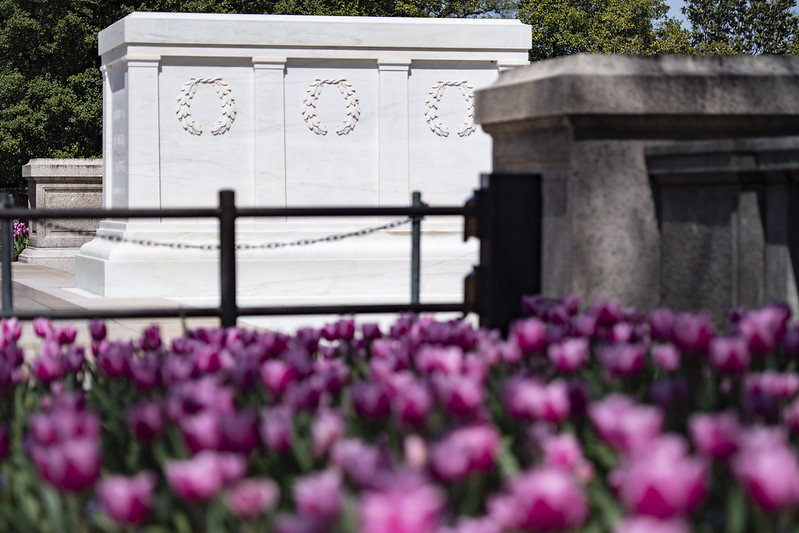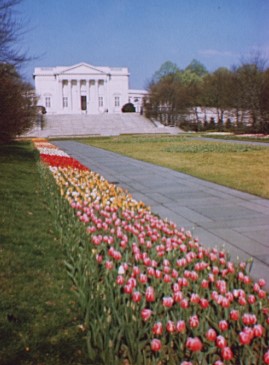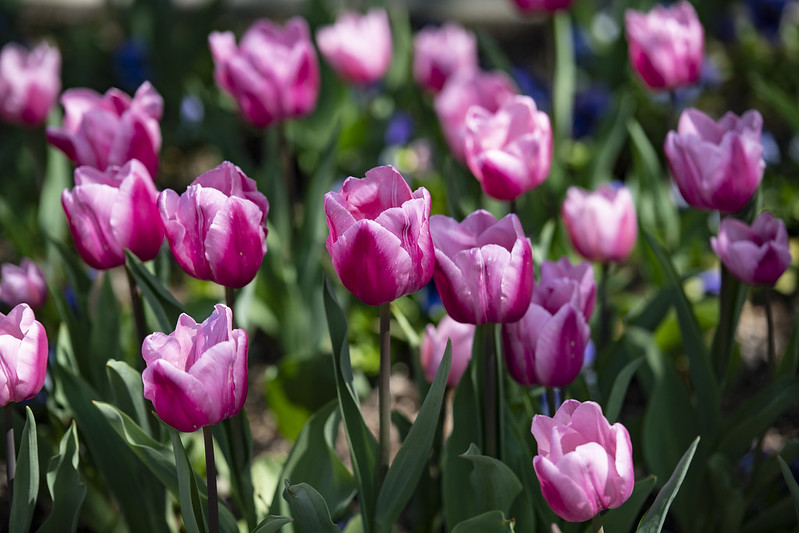
As Arlington National Cemetery prepares for Flowers of Remembrance Day on May 28, 2023, it is a fitting time to remember some other ways in which flowers have honored military service and sacrifice.
After World War II, the grateful people of the Netherlands gave the United States a blooming gift. In the summer of 1945, the U.S. Army accepted the first donation of 110,000 tulip bulbs to beautify America’s national cemeteries. On September 13, 1945, the Army announced the tulips would be planted at Arlington National Cemetery, as well as at cemeteries in Baltimore and Long Island. Eventually, the Netherlands donated 600,000 tulip bulbs.
During the war, the Dutch managed to prevent the Germans from stealing their finest tulip specimens. In September 1944, American airborne, infantry and armored units helped liberate parts of the Netherlands, on their way to defeating Nazi Germany. Once the war ended, Dutch citizens donated between three and nine cents to buy and send tulip bulbs to the United States as a way of saying thank you. Dutch children, remembering the G.I.s who gave them gum and candy, also raised money for the cause.
On October 25, 1945, Dutch girls in traditional dress planted the first bulbs around Capitol Hill. Dutch Ambassador Alexander Loudon and other distinguished guests attended the ceremony. Several weeks later, in a ceremony exclusive to the Dutch and American militaries, Dutch Maj. Gen. A.G. van Tricht presented the first bulbs to Arlington National Cemetery.
 Some 110,000 bulbs, dubbed “appreciation tulips,” were planted in two eight-foot beds flanking the walkways leading from the Tomb of the Unknown Soldier to the Roosevelt Fountain. By the next year, the tulips were in full bloom. “Their vivid colors are the more dramatic in that hallowed spot,” claimed a local newspaper in Holland, Michigan. “They add a striking note to the solemn scene, as do the soldiers who do sentry duty, day and night, at the marble tomb." On April 9, 1946, Ambassador Loudon and his wife picked a bouquet of tulips from the beds and laid it on the Tomb of the Unknown Soldier to symbolize the Netherlands’ gratitude to the United States. In the following years, the original tulip beds were replaced with formal hedges of linden trees. Today, the tulips that bloom around the cemetery are replaced yearly. However, most tulips have been replaced with daffodils for one simple reason: “The critters love to dig up tulip bulbs,” explained ANC horticulturalist Kelly Wilson. Squirrels and deer feed on tulip bulbs, while leaving most other bulbs alone.
Some 110,000 bulbs, dubbed “appreciation tulips,” were planted in two eight-foot beds flanking the walkways leading from the Tomb of the Unknown Soldier to the Roosevelt Fountain. By the next year, the tulips were in full bloom. “Their vivid colors are the more dramatic in that hallowed spot,” claimed a local newspaper in Holland, Michigan. “They add a striking note to the solemn scene, as do the soldiers who do sentry duty, day and night, at the marble tomb." On April 9, 1946, Ambassador Loudon and his wife picked a bouquet of tulips from the beds and laid it on the Tomb of the Unknown Soldier to symbolize the Netherlands’ gratitude to the United States. In the following years, the original tulip beds were replaced with formal hedges of linden trees. Today, the tulips that bloom around the cemetery are replaced yearly. However, most tulips have been replaced with daffodils for one simple reason: “The critters love to dig up tulip bulbs,” explained ANC horticulturalist Kelly Wilson. Squirrels and deer feed on tulip bulbs, while leaving most other bulbs alone.
Above: Tulips line the walkway between the Tomb of the Unknown Soldier and the Roosevelt Fountain. (Theodor Horydczak/Library of Congress, ca. 1940s-1950s)
Flowers have long been a symbol of remembrance and gratitude at Arlington National Cemetery—whether they are tulips planted on the grounds, wreaths placed at headstones or flowers laid at the Tomb of the Unknown Soldier on Flowers of Remembrance Day.
